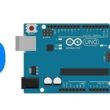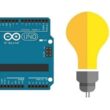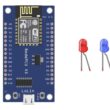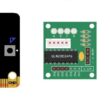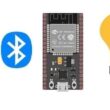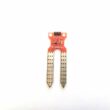What is a water pump ?
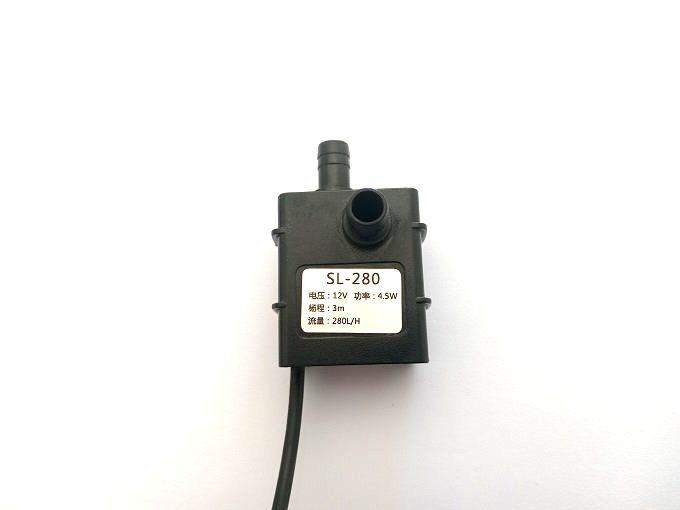
what is a water pump ?
A water pump is a mechanical device that is used to move water from one place to another. It is typically used to increase the pressure and flow rate of water in a plumbing system, or to pump water from a well or other source for irrigation, drinking water, or other uses.
Water pumps come in a variety of sizes and types, including centrifugal pumps, diaphragm pumps, jet pumps, submersible pumps, and hand pumps. Each type of pump has its own unique advantages and disadvantages, and is best suited for specific applications.
Some common uses for water pumps include:
Providing water for homes and businesses
Irrigating crops and gardens
Pumping water from underground wells
Removing water from flooded areas
Circulating water in swimming pools and ponds
Cooling engines and machinery in industrial settings.
Types of water pumps
There are several types of water pumps available, each designed for specific applications. Here are some common types of water pumps:
Centrifugal pumps: These pumps use a spinning impeller to move water. They are the most common type of water pump and are used for a variety of applications, such as pumping water from a well or boosting water pressure in a building.
Submersible pumps: These pumps are designed to be fully submerged in water and are typically used for applications such as pumping water out of a flooded basement or well.
Diaphragm pumps: These pumps use a flexible diaphragm to move water and are commonly used in agricultural applications, such as irrigating crops.
Jet pumps: These pumps use a jet of water to create suction and move water. They are commonly used for shallow wells or for boosting water pressure in a building.
Hand pumps: These pumps are operated manually and are commonly used for pumping water from a well or other water source in rural areas.
Gear pumps: These pumps use gears to move water and are commonly used in industrial settings for pumping viscous fluids such as oils and fuels.
Each type of water pump has its own advantages and disadvantages, and the choice of pump will depend on the specific application and requirements.
Role of the water pump in robotic projects
In robotic projects, water pumps can be used for a variety of purposes, such as cooling the robot's electronic components, providing hydraulic power for actuators, or circulating fluids in a closed-loop system.
One common use of water pumps in robotic projects is for cooling. As electronic components in robots can generate a significant amount of heat, it is important to keep them at a safe operating temperature to prevent damage or failure. Water pumps can be used to circulate coolant through the robot's cooling system, which can help dissipate heat and maintain a safe operating temperature.
Water pumps can also be used to provide hydraulic power to actuators in robotic systems. Hydraulic actuators use pressurized fluids to generate force and movement, and water pumps can be used to create the necessary pressure for these actuators to function.
In addition, water pumps can be used in closed-loop fluid systems, where fluids are circulated through the robot's components and back to the pump. This can help maintain a consistent temperature and pressure in the system, which can be important for precise and reliable operation.
Water pump and microcontrollers
Water pumps can be integrated with microcontrollers to create more advanced and intelligent systems that can automate water pumping tasks and monitor pump performance. By using microcontrollers, water pumps can be programmed to turn on and off automatically based on various conditions such as water level or time of day, reducing the need for manual intervention.
In addition, microcontrollers can be used to monitor and adjust the performance of water pumps, allowing for better control over water flow and pressure. For example, sensors can be used to measure water pressure and flow rates, and this information can be fed back to the microcontroller, which can adjust the pump's speed or output accordingly.
Another application of microcontrollers in water pump systems is in remote monitoring and control. By connecting the microcontroller to a network or the internet, it is possible to remotely monitor and control water pump systems from anywhere in the world using a smartphone or computer. This can be particularly useful in agricultural or irrigation applications, where water pumps may be located in remote areas.
Water pump and Arduino
Arduino is a popular microcontroller platform that can be used to control and automate water pump systems. Arduino boards are relatively easy to use and have a large community of users, making them a popular choice for DIY projects and prototyping.
There are several ways in which Arduino can be used with water pumps, depending on the specific application and requirements. Here are some examples:
Automatic water pump control: By using sensors to measure water level or flow, an Arduino can be programmed to turn a water pump on or off automatically. This can be useful for applications such as irrigation, where water pumps need to be turned on and off at specific times.
Pump speed control: An Arduino can be used to adjust the speed of a water pump, either manually or automatically based on feedback from sensors. This can be useful for applications such as fountain pumps or hydroponic systems, where precise control over water flow is important.
Remote monitoring and control: By connecting an Arduino to a network or the internet, it is possible to remotely monitor and control a water pump system from anywhere in the world. This can be useful for applications such as agricultural irrigation systems or remote wells.
Water quality monitoring: An Arduino can be used to measure water quality parameters such as pH or dissolved oxygen levels, and use this information to adjust the operation of a water pump or trigger alerts if the water quality falls below a certain threshold.
Examples of water pumps
Here are two examples of water pumps:
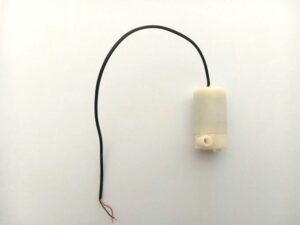
A 5V water pump is a small pump that operates on a voltage of 5 volts and is designed to move water or other liquids. These types of pumps are commonly used in small electronic projects, such as aquariums, terrariums, and other water-based systems.
There are different types of 5V water pumps available, including submersible pumps and non-submersible pumps. Submersible pumps are designed to be placed directly into the water, while non-submersible pumps are designed to be placed outside the water and are connected to a hose or tubing to pump the water.
When selecting a 5V water pump, it's important to consider the flow rate, head pressure, and power consumption. The flow rate is the amount of water the pump can move per unit of time, while the head pressure is the amount of pressure the pump can generate to push the water against gravity. The power consumption refers to the amount of power the pump requires to operate.
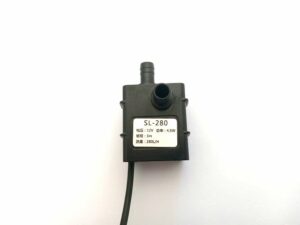
A 12V water pump is a type of electric pump that operates on a voltage of 12 volts and is used to move water or other liquids. These types of pumps are commonly used in a variety of applications, including water cooling systems for computers, solar water heating systems, RVs, boats, and other water-based systems.
There are different types of 12V water pumps available, including submersible pumps and non-submersible pumps. Submersible pumps are designed to be placed directly into the water, while non-submersible pumps are designed to be placed outside the water and are connected to a hose or tubing to pump the water.
When selecting a 12V water pump, it's important to consider the flow rate, head pressure, and power consumption. The flow rate is the amount of water the pump can move per unit of time, while the head pressure is the amount of pressure the pump can generate to push the water against gravity. The power consumption refers to the amount of power the pump requires to operate.
How to program the water pump ?
Programming a water pump involves using a microcontroller or a single-board computer to control the pump's operation based on a specific program or set of instructions. Here are the general steps involved in programming a water pump:
1- Choose a microcontroller or single-board computer: The first step is to choose the appropriate hardware that will be used to control the water pump. Arduino, Raspberry Pi, and ESP32 are popular choices.
2- Install the necessary software: Next, you will need to install the necessary software on your computer. This may include an Integrated Development Environment (IDE), drivers, and libraries for the specific microcontroller or single-board computer you are using.
3- Connect the pump to the microcontroller: Once you have installed the necessary software, connect the water pump to the microcontroller using wires or a breadboard.
4- Write the code: Using the IDE, write the code that will control the water pump based on your specific requirements. This may involve setting the speed, direction, and duration of the pump operation.
5- Upload the code to the microcontroller: Once you have written the code, upload it to the microcontroller or single-board computer using the appropriate software and instructions.
6- Test the pump: Finally, test the pump to ensure that it is operating as expected. You may need to make adjustments to the code and re-upload it to the microcontroller if the pump is not working as desired.
Role of water pump in smart sprinkler system
The water pump plays a crucial role in smart sprinkler systems as it is responsible for delivering the necessary amount of water to the crops in an efficient and sustainable manner. Water pumps are a vital component of the system, pumping water from the source to the tanks, then through the pipes and sprinklers.
Smart sprinkler systems rely on a series of sensors and electronic devices connected to control units to regulate the amount and quality of water used for irrigation, improving water efficiency and supply. The amount of water needed for irrigation and its quality are determined based on the crop type, weather conditions, and current soil moisture levels, and these data are monitored and regulated by programmed intelligent systems.
Moreover, water pumps in smart irrigation systems can be used to recycle and purify wastewater from irrigation, reusing treated irrigation water and returning it back to the source after salt content reduction.
In general, the role of water pumps in smart sprinkler systems is to deliver water efficiently and sustainably, improve water efficiency and supply, improve crop quality, and increase agricultural production.
1 comment
https://Evolution.org.ua/ 08-11-2424
That is really interesting, You're an excessively professional blogger. I have joined your rss feed and look ahead to in search of extra of your great post.



















